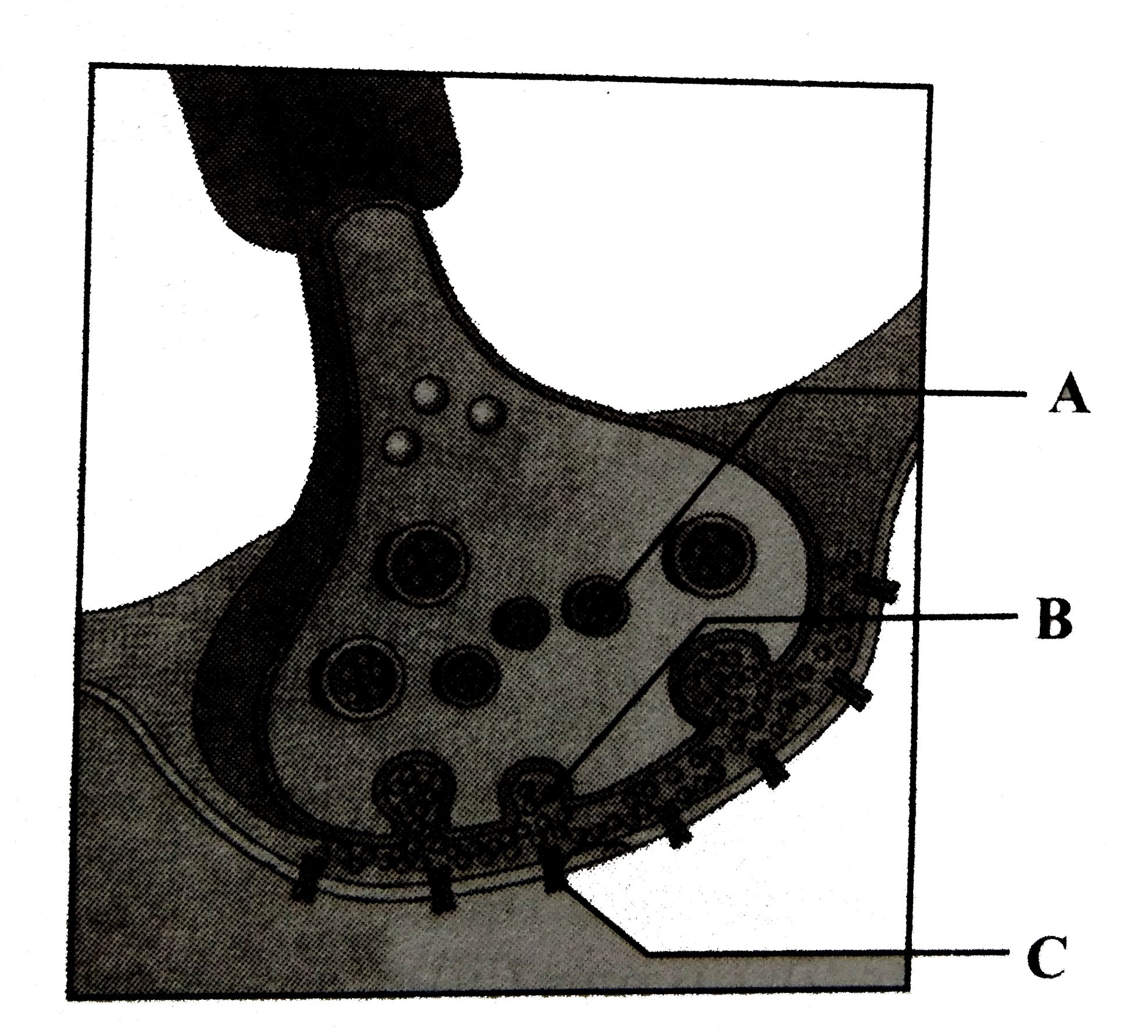[A] : The synaptic knob contains mitochondria and synaptic vesicles rich in chemical trans- mitters.
[R]: Chemical transmitters are neurohor- mones. Their release is related to Ca++ in- flux.
If both A and R are true and R is the correct explanation of A
If both A and R are true but R is not the correct explanation of A
If A is true and R is false
If both A and R are false
The correct Answer is:A
Step by step video, text & image solution for [A] : The synaptic knob contains mitochondria and synaptic vesicles rich in chemical trans- mitters. [R]: Chemical transmitters are neurohor- mones. Their release is related to Ca^(++) in- flux. by Biology experts to help you in doubts & scoring excellent marks in Class 12 exams.
Updated on:21/07/2023Topper's Solved these Questions
Similar Questions
Assertion : The chemical stored in the synaptic vesicles are termed as neurotransmitters.
Reason : Synaptic vesicles release these chemicals in the synaptic cleft.
View SolutionWhich option is correct for conduction of nerve impulse along chemical synapse?
i. At synapse, the membranes of the pre and postsynaptic neurons are separated by a fluid-filled space called synaptic cleft
ii. Chemicals called neurotransmitters are involved in the transmission of impulses at these synapses
iii. The axon terminals contain vesicles filled with these neurotransmitters
iv. When an impulse arrives at the axon terminal, synaptic vesicles release their neurotransmitters in the synaptic cleft.
v. The released neurotransmitters bind to their specific receptors, present on the pre-synaptic membrane.
vi. Opens ion channels allowing the entry of ions which can generate a new potential in the postsynaptic neuron
vii. The new potential developed is only excitatory
View Solution
Knowledge Check
Synaptic vesicles contains chemicals called
Asynaptic fluidBneurotransmittersCvesicular fluidDall of the above[A] : In mammals, ends of presynaptic fibres are enlarged to form synaptic Knobs which are separated by a synaptic cleft from postsynaptic neurons. Each synaptic knob contains many mitochondria and small gran- ule-Iike synaptic vesicles filled with minute packets of the chemical that transmits im- pulses to postsynaptic neurons.
[R]: The chemical transmitters are called neurohumors which proportionate to K+ in- flux.AIf both A and R are true and R is the correct explanation of ABIf both A and R are true but R is not the correct explanation of ACIf A is true and R is falseDIf both A and R are falseAxon endings release from ints synaptic vesicles , a neuro-transmitter substance known as
AAcetylcholineBAcetylcholinesterasesCInositol - 3 phosphateDDiacylglycerol
The given diagram shows axon terminal.Select the option that correctly matches the steps in transmission of impulses (list i-vii) with the labellings (A-C) in diagram.

(i)Chemicals called neurotransmitters are released in the synaptic cleft through ion channels.
(ii)When an impulse arrives at the axon terminal, it stimulates the movement of synaptic vesicles.
(iii)Neurotransmitters are endocytosed into the neurons.
(iv)The ions channels close with the binding of neurotransmitters to their specific receptors vesicles.
(v)Synaptic vesicles move towards the membrane where they fuse with the plasma membrane.
(vi)Neurotransmitters are released in the synaptic cleft.
(vii)The released transmitters bind to their specific receptors on post-synaptic membrane
View Solution[A] : Synaptic vesicles fuse with membrane and release neurotransmitter molecules.
[R]: Neurotransmitter attaches to receptor site and open sodium channels to allow so- dium to flow into post synaptic cell causing depolarisation.
View SolutionThe release of chemical messenger from synaptic vesucles is under the influence of which of these ion (s) ?
View SolutionWhich of the following statements regarding impulse transmission is incorrect ?
I . Chemicals called neurotransmitters are involved in impulse transmission across the synapses.
II. The membranes of the pre - synaptic and post - synaptic neuron are separated by an empty space called the synaptic cleft.
III. The released neurotransmitters bind to the specific receptors present on the pre - synaptic membrane.
IV. The new potential which develops is always excitatory.
View SolutionIn each of the following question a statement of assertion is given followed by corresponding statement of reason of the statement mark the correct
Assertion The presynaptic neuron transmits an impulse (action potential) across the synaptic cleft to the postsynaptic neuron.
Reason [R] for the transmission of impulses at synapses chemicals called neurotransmitters are responsible.
View Solution
